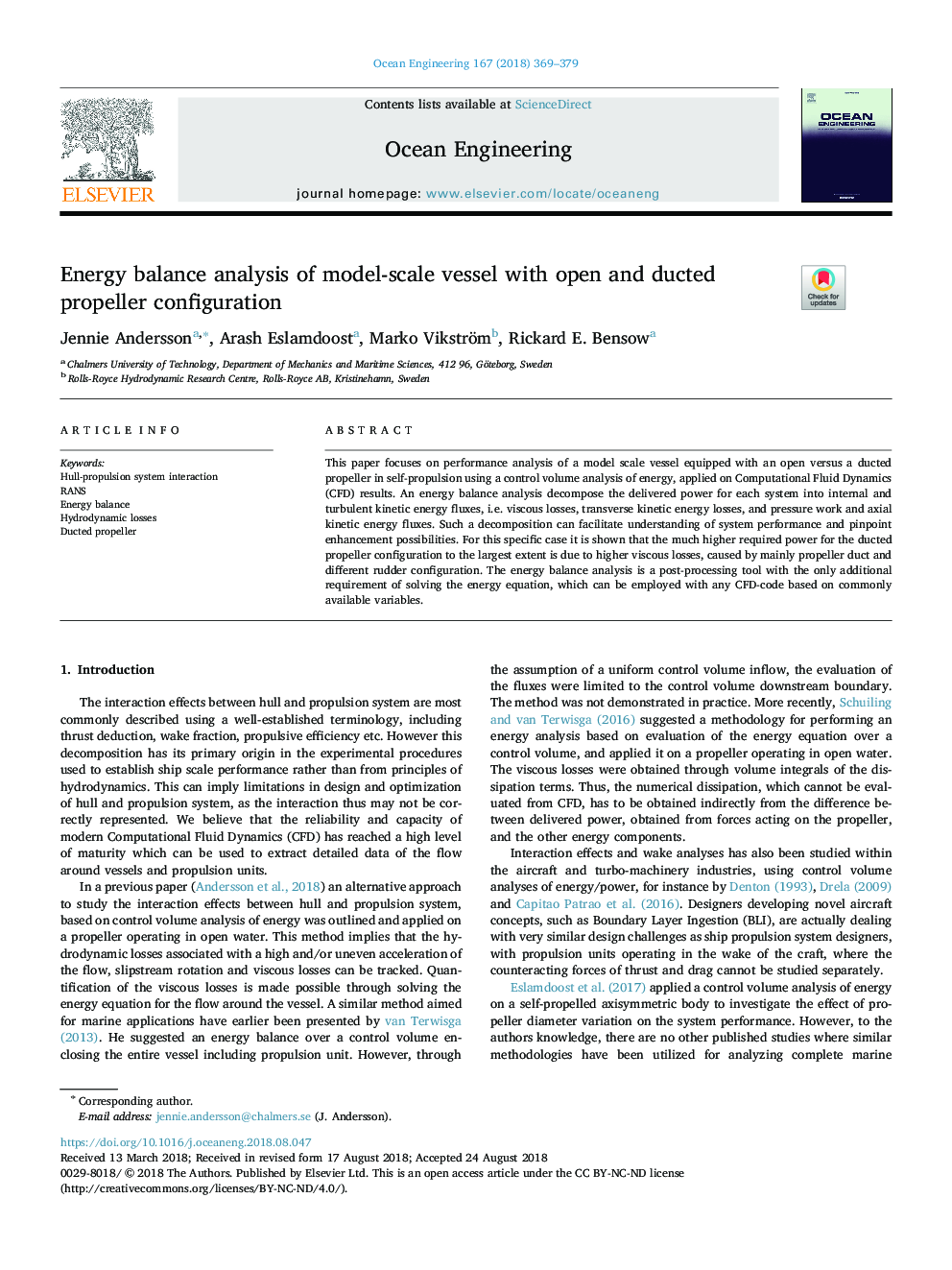| Article ID | Journal | Published Year | Pages | File Type |
|---|---|---|---|---|
| 10136213 | Ocean Engineering | 2018 | 11 Pages |
Abstract
This paper focuses on performance analysis of a model scale vessel equipped with an open versus a ducted propeller in self-propulsion using a control volume analysis of energy, applied on Computational Fluid Dynamics (CFD) results. An energy balance analysis decompose the delivered power for each system into internal and turbulent kinetic energy fluxes, i.e. viscous losses, transverse kinetic energy losses, and pressure work and axial kinetic energy fluxes. Such a decomposition can facilitate understanding of system performance and pinpoint enhancement possibilities. For this specific case it is shown that the much higher required power for the ducted propeller configuration to the largest extent is due to higher viscous losses, caused by mainly propeller duct and different rudder configuration. The energy balance analysis is a post-processing tool with the only additional requirement of solving the energy equation, which can be employed with any CFD-code based on commonly available variables.
Keywords
Related Topics
Physical Sciences and Engineering
Engineering
Ocean Engineering
Authors
Jennie Andersson, Arash Eslamdoost, Marko Vikström, Rickard E. Bensow,
